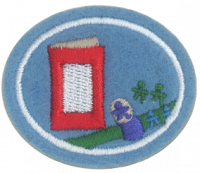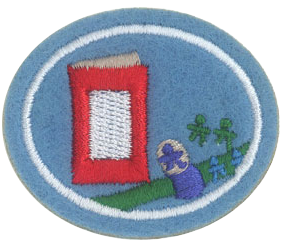Difference between revisions of "AY Honors/Card Making/Answer Key/es"
(Created page with "<noinclude>") |
(Created page with "</noinclude>") |
||
| Line 286: | Line 286: | ||
<noinclude></noinclude> | <noinclude></noinclude> | ||
{{ansreq|page={{#titleparts:{{PAGENAME}}|2|1}}|num=13a}} <!--T:61--> | {{ansreq|page={{#titleparts:{{PAGENAME}}|2|1}}|num=13a}} <!--T:61--> | ||
| − | <noinclude> | + | <noinclude></noinclude> |
| − | </noinclude | ||
| − | |||
| − | |||
| − | |||
<div lang="en" dir="ltr" class="mw-content-ltr"> | <div lang="en" dir="ltr" class="mw-content-ltr"> | ||
Revision as of 14:48, 26 April 2021
Nivel de destreza
1
Año
2010
Version
15.12.2025
Autoridad de aprobación
Asociación General
1
1a
1b
1c
1d
1e
1f
1g
1h
2
2a
2b
2c
2d
2e
2f
3
4
5
6
7
8
In the club we set up a rubber stamp care station for kids to demonstrate cleaning the stamps they used during our card making time.
9
9a
9b
9c
9d
9e
9f
10
11
11a
11b
11c
11d
11e
11f
12
12a
12b
13
13b
"Final Greetings: Tychicus, a much loved brother and faithful helper in the Lord's work, will tell you all about how I am getting along." In biblical days letters were hand delivered and often read to or sometimes recited word for word to the recipient (much like singing tele-grams!). Here is an example of how Paul doesn't even bother to tell his readers how he is and lets his messenger do it! Our modern day cards are usually how folks update each other on the latest happenings in each others lives.
"Greetings from Paul: This letter is from Paul and Timothy, slaves of Jesus Christ." This resembles a letterhead on a formal letter where you write the address and position of the writer. We usually don't need to add our titles on to greeting cards unless it is an official or business correspondence.
"So, don't be misled, my brothers and sisters...be quick to listen, slow to speak, and slow to get angry." This passage from Paul gives us advice on how to act or re-act. Not many cards actually give sound advice these days, usually if and when a card gives advice its out of humor.
13e
"This letter is from Paul, in prison for preaching the Good News about Christ Jesus, and from our brother Timothy." Paul signs his name and identifies who wrote it at the BEGINNING of his letters & ends with his wishes and prayers for the reader. Traditionally, we sign our cards at the bottom or end of the message & place greetings/blessings/well-wishes at the front.
References
contributor: ArniLynne Tupas-Setser, New Hope SDA Nighthawks, 2014.


